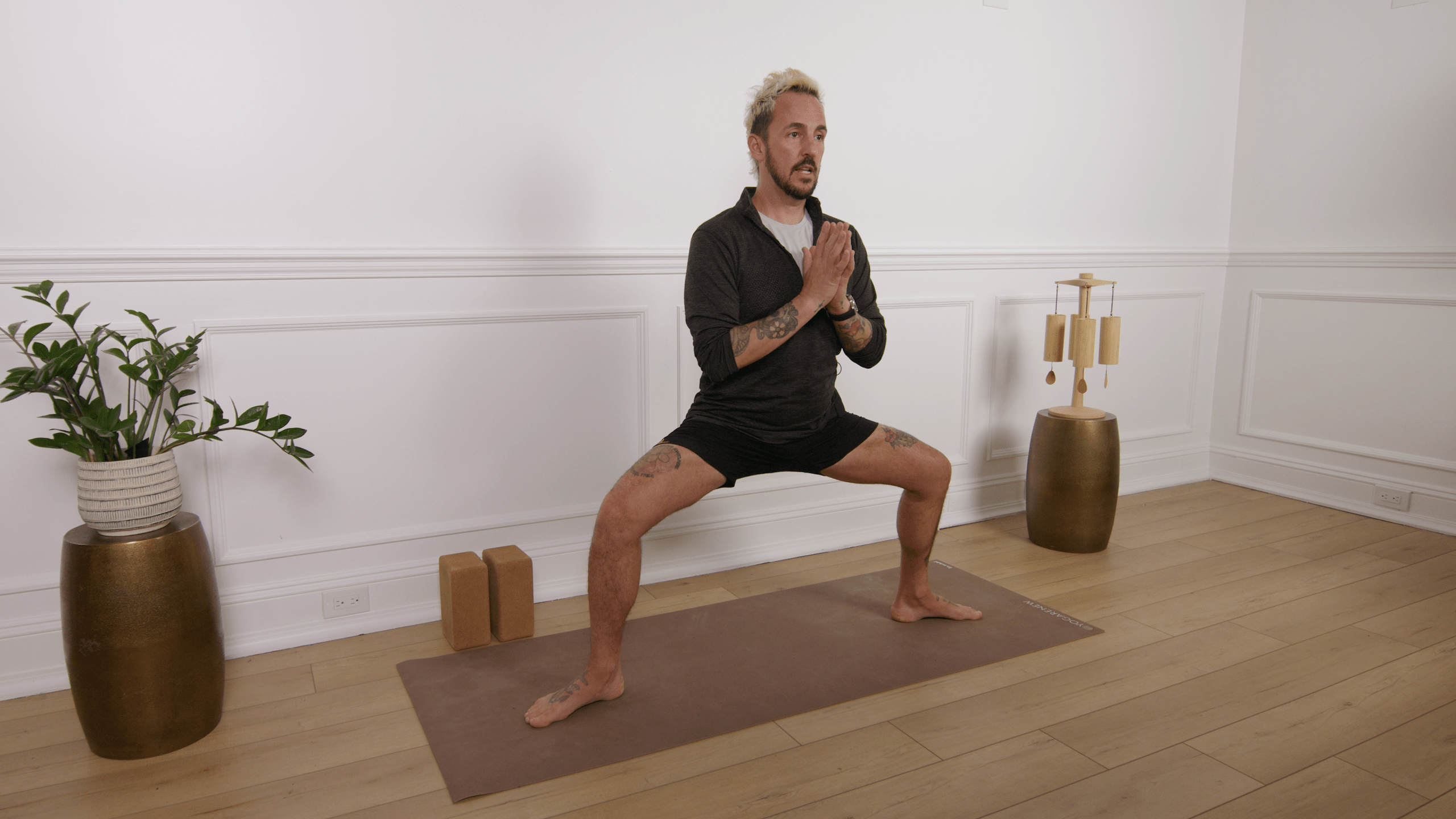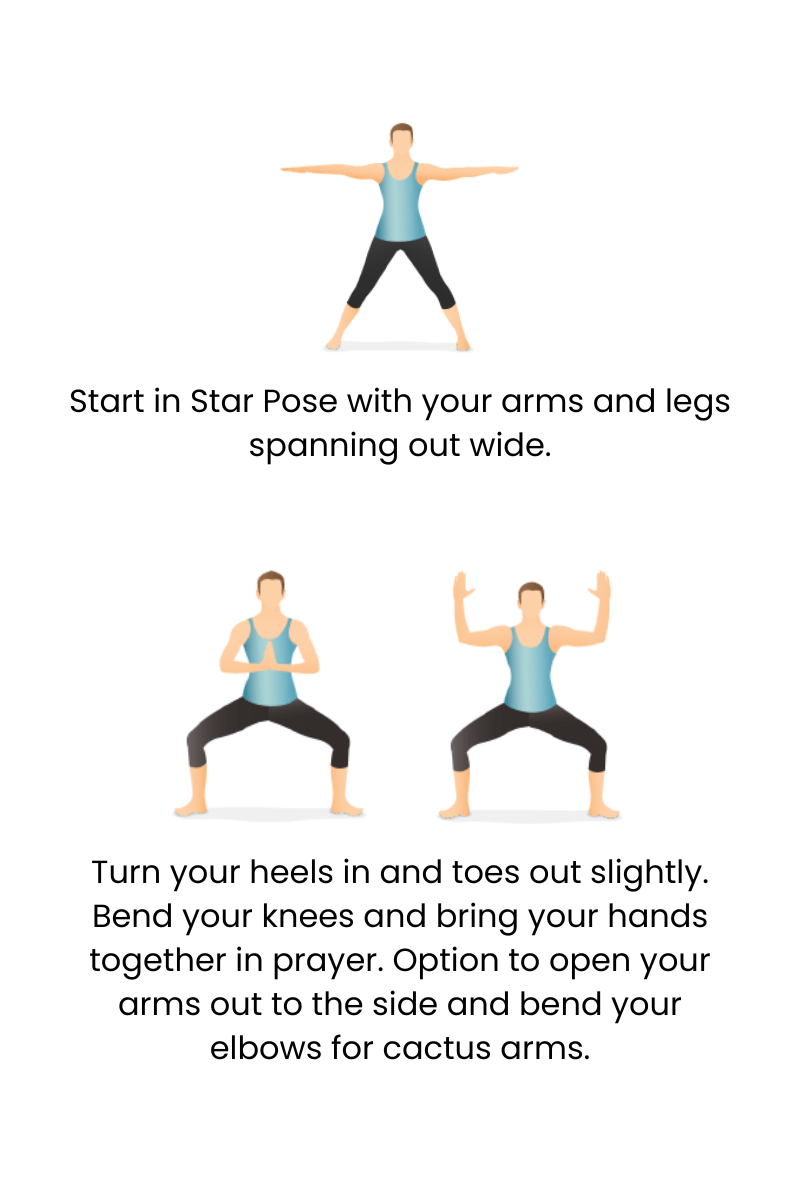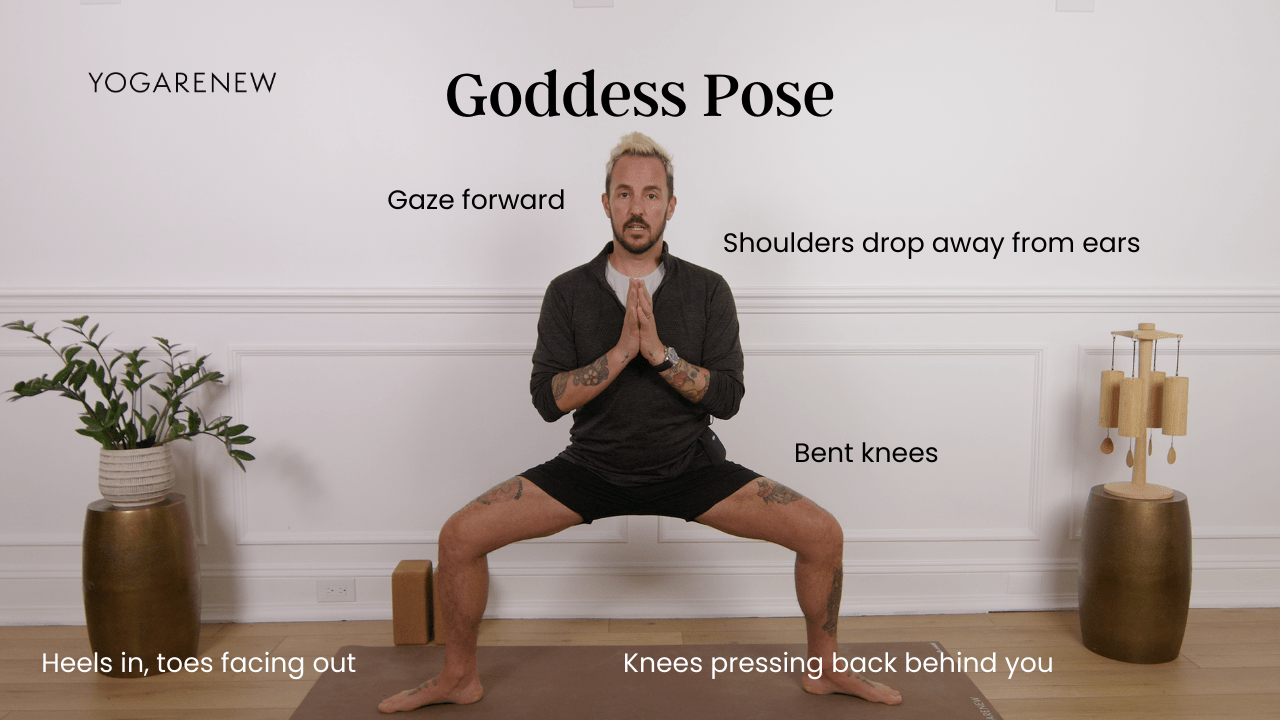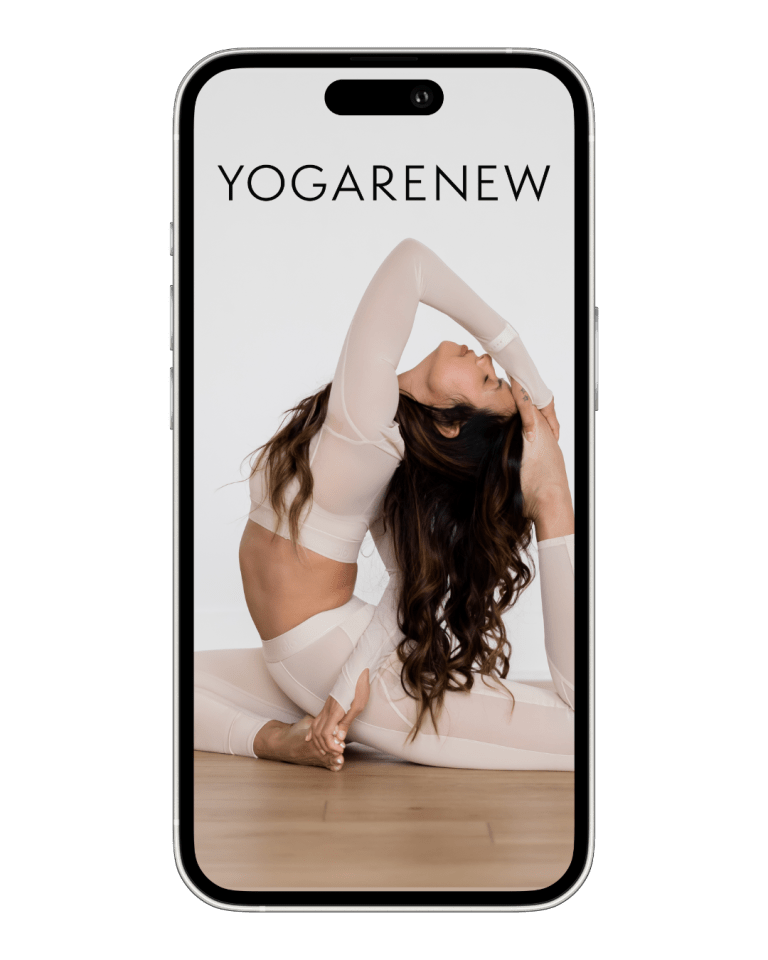What is Goddess Pose?
English Name: Goddess Pose
Sanskrit Name: Utkata Konasana (pronounced OOT-kah-tuh cone-AHS-uh-nuh)
Category: Standing Pose, Hip Opener, Strength, Mood Booster

English Name: Goddess Pose
Sanskrit Name: Utkata Konasana (pronounced OOT-kah-tuh cone-AHS-uh-nuh)
Category: Standing Pose, Hip Opener, Strength, Mood Booster
Utkata Konasana, or Goddess Pose, is a powerful standing posture that channels grounded strength, stability, and inner fire. With knees bent wide, thighs parallel to the floor, and arms lifted or active, Goddess Pose opens the hips and chest while building endurance in the lower body.
Rooted in both strength and stillness, this pose is accessible to many levels and is often used in practices focused on stability, energy activation, and feminine empowerment. Whether used as a strength-builder or in a slow, meditative flow, Goddess Pose brings a sense of grounded presence and intentional power.


Goddess Pose is more than just a lower-body strengthener—it’s a physical and energetic stance of empowerment. It builds resilience in the body, challenges balance and control, and helps channel inner strength and groundedness. Whether used in fiery flows or meditative stillness, Utkata Konasana connects practitioners to their foundation, both physically and emotionally.
Yes! Start with a smaller stance and gradually work on opening the hips over time.
It’s primarily strengthening but includes deep hip opening and some stretching.
Use wall support, engage your muscles evenly, and focus on breath control.

Explore classes & pose tutorials for any style, format, duration or experience level with a free account in the YogaRenew app. Or subscribe and gain access to workshops, live classes and more.